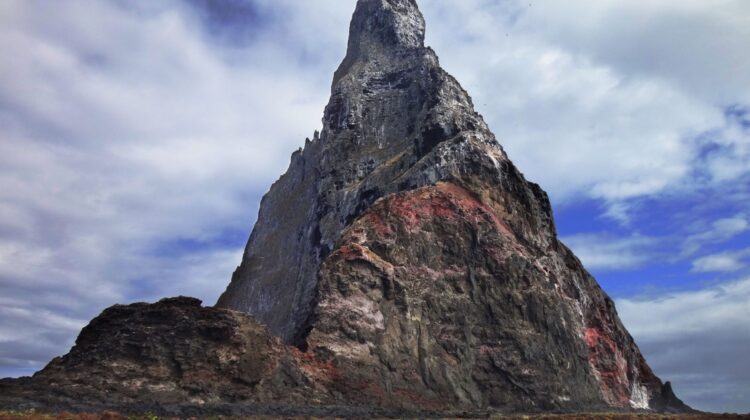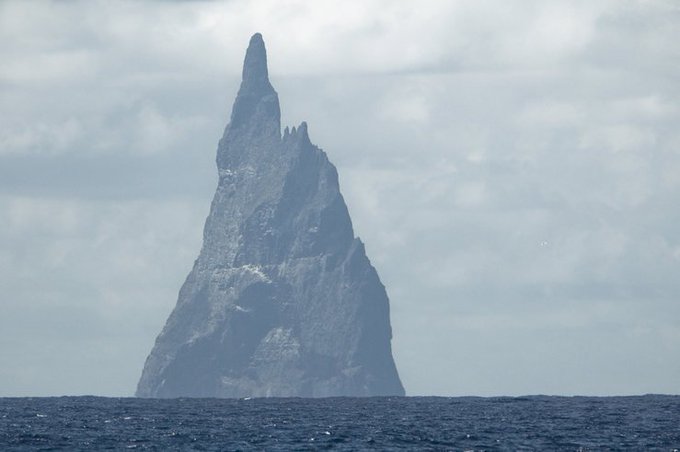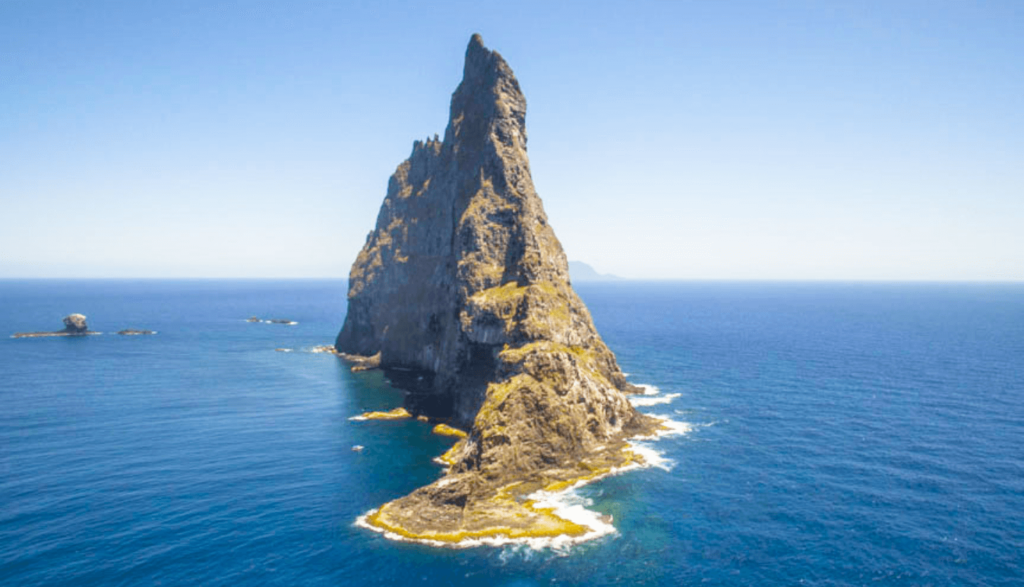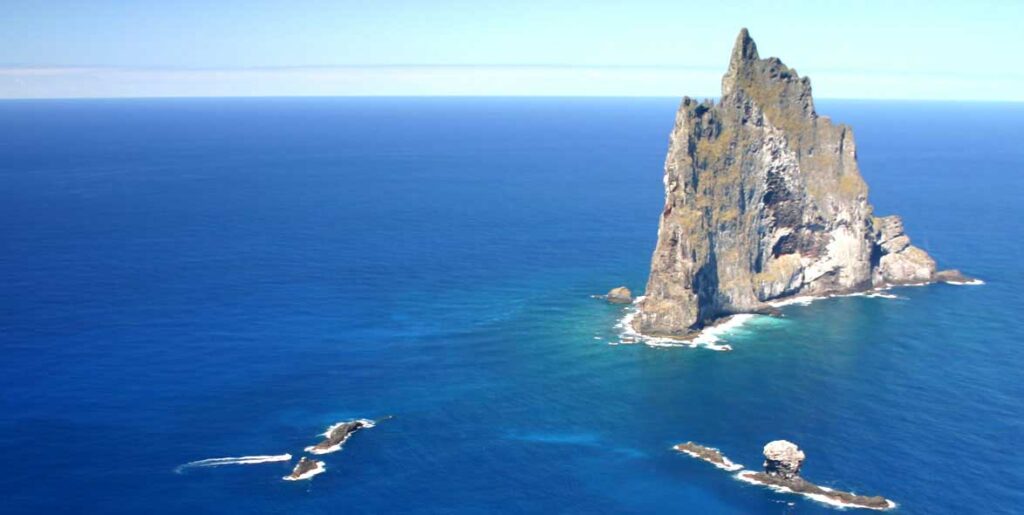
In the midst of the vast Pacific Ocean, there exists a geological wonder that seems to have been plucked straight out of the pages of a fantasy novel. It is a towering monolith known as Ball’s Pyramid, a natural masterpiece that surpasses the boundaries of imagination. With an elevation of 562 meters, this extraordinary pinnacle stands taller than it stretches wide, spanning a mere 300 meters across. Its existence is not a figment of our dreams but a captivating reality.

Nestled far from civilization, Ball’s Pyramid emerges majestically from the azure waters, shrouded in an aura of mystique. Located around 600 kilometers east of Australia, this rocky behemoth is part of the Lord Howe Island group, an isolated archipelago that belongs to New South Wales. While the island itself is a UNESCO World Heritage site, Ball’s Pyramid remains an awe-inspiring anomaly within this pristine paradise.

Formed over millions of years through the relentless forces of nature, Ball’s Pyramid is actually the remnant of a once-mighty shield volcano. Eons of volcanic activity and subsequent erosion have sculpted it into the extraordinary formation we see today. The pyramid-like structure, with its sheer cliffs and jagged edges, gives an impression of otherworldliness. As the sunlight dances upon its rugged surface, casting dramatic shadows, one cannot help but feel transported to a realm where imagination runs wild.

While the imposing appearance of Ball’s Pyramid is undeniably captivating, it is the hidden secrets within its confines that truly fascinate adventurers and scientists alike. Despite the seemingly inhospitable environment, this isolated bastion has managed to nurture an astonishing array of flora and fauna, some of which exist nowhere else on Earth. The unique microclimate and vertical topography of the pyramid have created niches for various species to thrive.
One of the most remarkable discoveries on Ball’s Pyramid is the Lord Howe Island stick insect (Dryococelus australis), commonly referred to as the “land lobster.” Once thought to be extinct due to the introduction of rats to Lord Howe Island, these intriguing insects were miraculously rediscovered on the pyramid in 2001. A small population of these ancient creatures managed to find refuge on a precarious ledge, defying the odds and capturing the attention of the scientific community. Since then, dedicated conservation efforts have been undertaken to protect and breed these extraordinary insects.

The allure of Ball’s Pyramid extends beyond its unique inhabitants. The underwater realm surrounding the pyramid is a diver’s paradise, boasting vibrant coral gardens and an abundance of marine life. The crystal-clear waters beckon intrepid explorers to delve into their depths and uncover the wonders that lie beneath. From vibrant fish darting through the coral labyrinth to graceful sea turtles gracefully gliding through the currents, the aquatic spectacle is nothing short of breathtaking.

Venturing onto the pyramid itself is a feat reserved for the most adventurous souls. Ascending its steep slopes and navigating its treacherous terrain require skill, courage, and an unwavering determination. Only a select few have conquered the challenge of scaling this natural marvel, leaving behind indelible footprints in the sand as a testament to their triumph.

Ball’s Pyramid stands as a testament to the raw power of nature and the boundless beauty it can create. Its towering silhouette, mystical allure, and hidden marvels have captivated the hearts and minds of all who have gazed upon it. As a tangible piece of our planet’s extraordinary tapestry, it serves as a reminder that even in the remotest corners of the Earth, nature never fails to surprise and inspire, making fantasies a living reality.

Leave a Reply